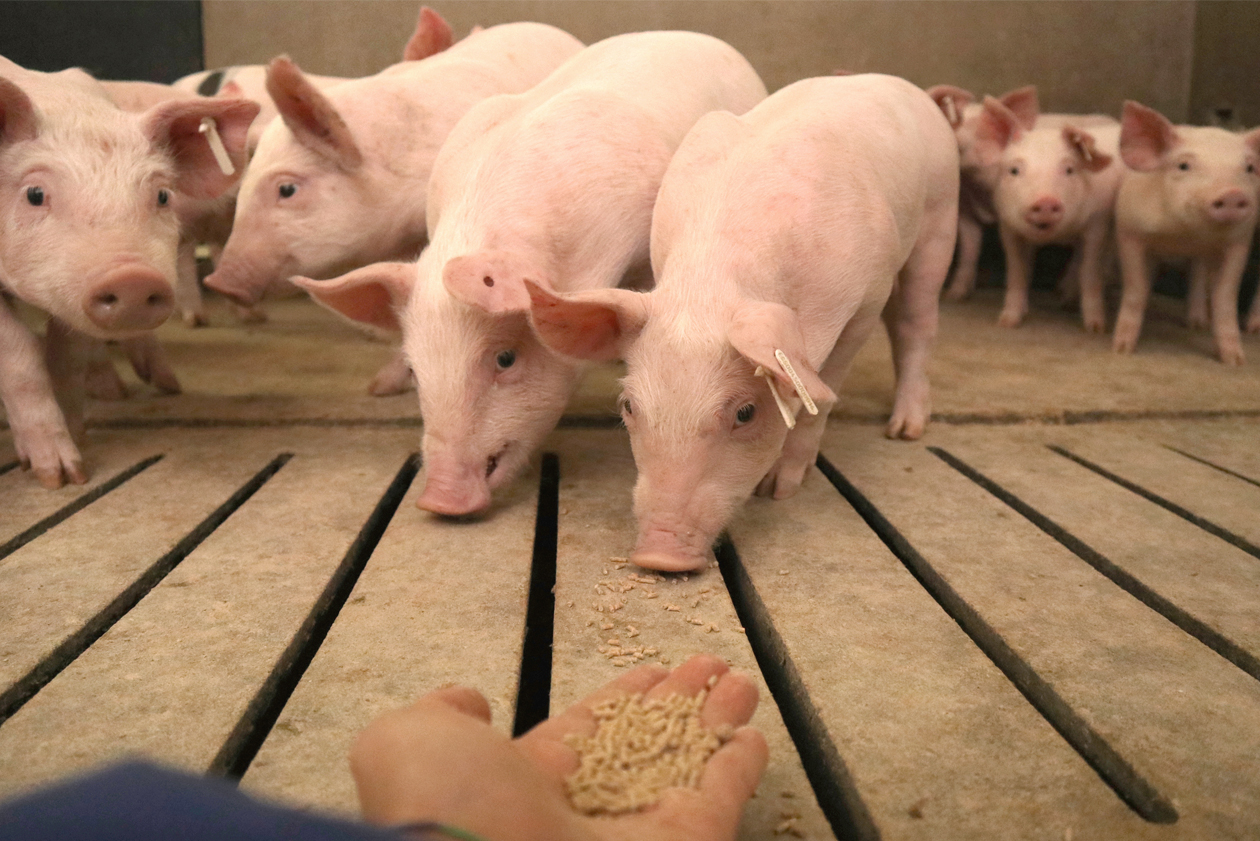In the last few posts we have given a series of nutritional recommendations according to the different life stages of a boar and the energy, lipid, protein and fibre needs.
In today’s post we will look in depth at the needs of vitamins, minerals and water consumption.
Vitamin requirements
In this group of micronutrients important for the reproductive system and its production, vitamins A, E, C, B6, K, B12, biotin and provitamin L-carnitine are the most important.
Vitamin A
The administration of vitamin A in feed increases fertility, as it is involved in the formation and maintenance of epithelial tissue and thus promotes spermatogenesis. A deficiency of this vitamin can lead to reproductive problems, affecting the germ cells, which would result in a decrease in seminal quality.
Vitamins E and C
These are essential antioxidant vitamins that have the capacity to stabilise fatty acids and prevent lipid peroxidation. Since oxidative stress is considered to be the main cause of sperm DNA damage, we must prevent it.
The addition of vitamin E in animal feed allows oxidative control, as it can prevent the alteration of the plasma membrane of spermatozoa, which is made up of phospholipids bound to fatty acids. A deficiency can lead to reduced fertility in males due to testicular degeneration and sperm immaturity.
In the face of increased stress in hot weather, vitamin C protects sex cells from oxidative damage and is also associated with increased testosterone synthesis.
Vitamin B6
Supplementation with vitamin B6 and folic acid during the most intensive semen collection periods improves semen production and increases the proportion of sperm cells with good motility.
L-Carnitina
Provitamin improves sperm production and motility in situations of stress or increased production rate, as demonstrated in several studies.
Vitamin B12
If there is a decrease in this, it would lead to a lack of appetite, decreased libido, fertility and prolificacy in females.
Biotin
For growing animals, supplementation is important because of its importance in the processes related to the integrity of hooves and hoofs. If a Biotin deficiency is added to a calcium and phosphorus deficiency, animals can develop gastrointestinal problems such as ulcers and erosions, as well as increasing the problems of the limbs and the levels of replacement of breeding stock.
Mineral requirements
Adequate mineral supplementation is very important in any of the three situations in which boars may find themselves: growth, maintenance and semen production, as a deficiency in minerals can lead to a decrease in sperm production.
Macrominerals
Calcium and phosphorus
They are essential to take into account in the formulation of feed for boars during their growth in order to ensure adequate bone development, and thus avoid the problems of conformation that some genetics have due to high growth rates.
Sodium
Excessive sodium in the feed should not be given as it increases water consumption, and perhaps appetite. This could increase the weight of sexually active animals and could lead to a problem of decreased libido and difficulty for the animals to jump in the extraction foals.
Microminerals
Zinc and Selenium
These two micronutrients are very important in testicular development and spermatogenesis, and should be administered in greater quantities in the seminal production phase compared to the growth or maintenance phase. Zinc plays an important role in spermatogenesis, sperm chromatin decondensation, Leydig cell maturation (responsible for testosterone synthesis) and gonadal development.
Selenium influences sperm formation, development, functionality and fertility, especially tail formation and maturation. A selenium deficiency in feed can result in reduced sperm viability, reduced sperm motility and testicular degeneration leading to an increase in the percentage of abnormal spermatozoa.
Manganese
It is an essential mineral for the growth phase of animals and body development of young animals, as well as improving semen quality. It acts as an enzyme activator and a deficiency of it in the feed can cause lameness, testicular atrophy and cellular degeneration of the epididymis, leading to progressive sterility of the boar.
Iodine
Iodine is part of thyroid hormone, which is produced in the thyroid gland. Libido is largely controlled by the thyroid gland, and a lack of libido has been observed following a decrease in thyroid function.
The water
Water is the most important nutrient in animal nutrition in general. Water consumption mainly depends on different characteristics such as body weight, feed intake, dry matter and feed composition, ambient temperature and water temperature. Limited water availability will reduce feed intake and have negative effects on growth.
The amount of water needed for an adult animal varies according to the different authors who have studied this point, but an average consumption will be about 10-15 litres of water/day and in times of high environmental temperatures it could increase up to 20 litres/day. So the water flow in the watering troughs of the boars should be higher than 1500 ml/minute.

Table 7. Water consumption in pigs. Source: Adapted from universoporcino.com
It is just as important to have a good water flow in our farms as the quality of the water. As drinking water standards for animals, the same standards are used as for humans (RD 140/2003), as there are no specific standards for animals.
Among the organoleptic criteria that water from our farms must satisfy, we must be clear that the water must be colourless, fresh and tasteless and with a turbidity of less than 6 (this measures the amount of suspended solids, giving us information about possible contamination).
As physico-chemical criteria we will analyse pH, conductivity, amount of salts and various minerals. The pH does not have a direct effect on semen productivity, but it is important when using drinking water treatments because an acidic pH can precipitate the drugs. Conductivity is a measure of the total solids (salts) dissolved in the water, and these vary with water temperature. The amount of sulphates in the water should also be monitored, as an excess of sulphates has a laxative effect and can cause diarrhoea, especially in young animals.
A very important criteria is the biological one, so it is recommended to monitor the presence of biofilm in pipes, drinking fountains, dummies, etc. as the main sanitary risk of water is possibly faecal contamination. The recommended limits for the presence of total aerobes in water at 22ºC is <1.000-2.000 cfu/100ml, and absence of faecal coliforms, Escherichia coli and Salmonella spp. in 100 ml.
Since water quality is very important for our animals to consume an adequate volume of water, we should have a protocol for monitoring the parameters defined above.

Table 8. Physico-chemical properties of drinking water. Source: adapted from www.3tres3.com




